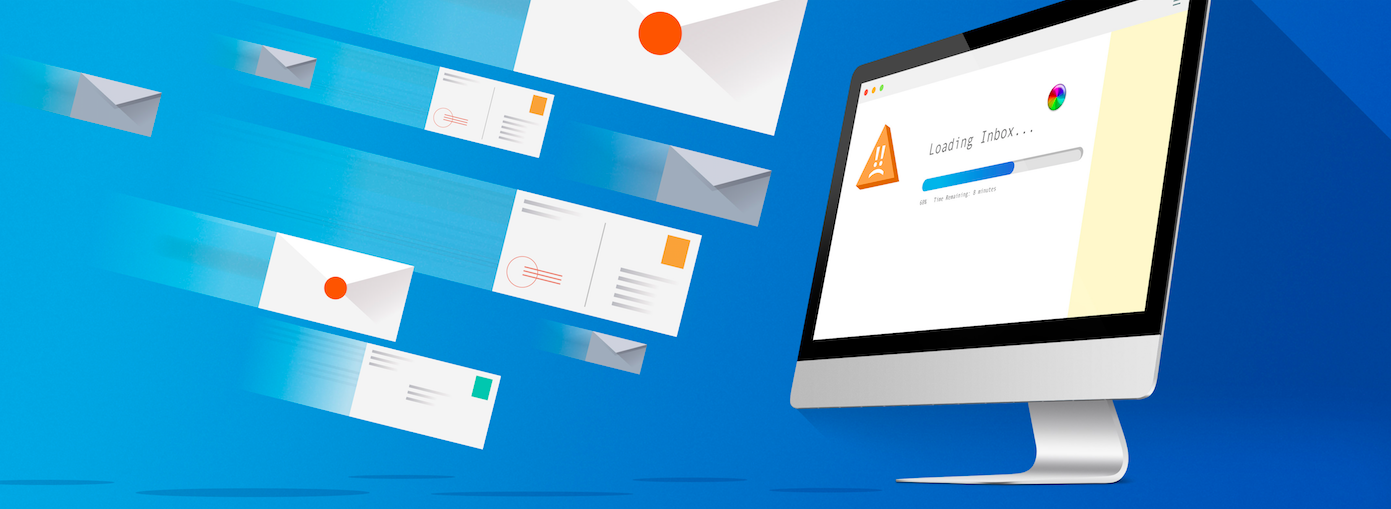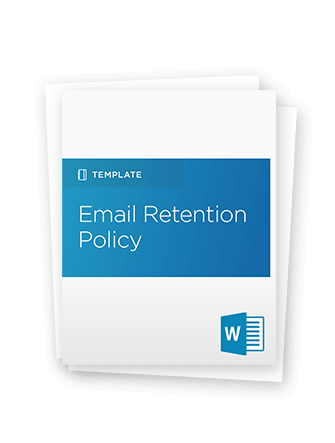Email Organization Tips: How to Effectively Manage Your Inbox

There are many strategies that can help you figure out how to organize your email better. Identifying them is easy. Figuring out which ones work best for you is perhaps the most challenging part.
Luckily there are some steps you can take to determine which email organization strategy is best for your situation. Before you do anything, however, it’s crucial that you understand the role email plays in your everyday workflow.
Email Rules Everything Around Us
No matter your profession, whether in sales or marketing; no matter the industry, whether it’s IT or education — email is likely an ever-present part of your day.
As a professional, you likely witness emails pile into your inbox throughout the workday. And if you’re like most people who lack strong email organization skills, then chances are your day can be pretty chaotic — as you’re constantly disrupted by email alerts, and the never-ending need to assess which emails to respond to and which to forward on. It’s an endless cycle.
Email Organization Strategies That Work for You
Dealing with email inbox organization is entirely a personal process. The only way to figure out the best way to organize YOUR email inbox is for YOU to determine the best process for doing so.
The following are five proven steps you can follow to identify the best email organization strategy for you:
- Establish your email organization identity.
- Use email inboxes as organizational tools.
- Determine the Importance of your emails
- Select email organization strategies for your workday.
- Eliminate unnecessary emails from your inbox.
1. Establish your email organization identity
Ask yourself: Are you a Reactor or a Batcher? A Piler or a Filer?
Decide who you want to be — are you the person who reacts to emails as soon as they arrive in your mailbox, or are you the person who checks your emails in large batches all at once? Do you want to organize your email inboxes into folders, or do you want to only use one inbox and allow your emails to pile up in there?
Figuring out who you are and who you want to be is a crucial step in creating your own email organization strategy, and will guide you in making all your subsequent choices. If you’ve got a concrete set of standards for dealing with your emails, it is easier to accomplish the broader goal of achieving a clean and organized inbox.
Checking your email regularly throughout the day can be an effective way to keep your inbox at manageable levels. However, the constant distraction that comes from this kind of multitasking can drastically decrease your productivity and disrupt your workflow when working on high-value projects.
An alternative is to check email only at set points during the day. For instance, you may decide that you’ll only check your email first thing in the morning, before lunch and at the end of the day.
Most email software systems can be set to receive messages only at certain times, preventing you from being distracted by incoming messages. If you can’t do this, at least make sure that you turn off audible and visual notifications that divert your attention away from the task at hand. Reserve time to read and respond to email after a long period of focused work, or at the time of day when your schedule is the most flexible.
You can also use apps like Inbox Pause, Batched Inbox or Inbox When Ready to guarantee that you deal with emails only when it is most beneficial for you.
2. Start Using Multiple Accounts as Organizational Tools
Setting up your email accounts so that your personal and professional life are detached is a good start. Separating your personal and professional communications is the easiest way to identify what you need to act on or keep, and what you can simply eliminate.
If having multiple accounts seems daunting, email services like Gmail and Outlook are designed to allow easy access to multiple accounts with minimal setup. Furthermore, email clients such as eM Client, Mailbird, Hiri or Mozilla Thunderbird can be used to aggregate your separate accounts in one place — this allows you to work effectively without exhausting your mental resources across multiple platforms. Using an email management program or application can keep your email priorities sorted, meaning you can deal with them one at a time, efficiently, on one device.
Differentiating and identifying the importance of each account will help you efficiently organize your inbox(es). You can also try taking your work email account off your home or personal computer and your phone, and taking your personal account and your bulk reading account off your work computer, providing you a physical barrier between your different priorities.
3. Determine the Importance of your Emails
Don’t waste time with unimportant emails; it is best to just delete them as soon as you handle them. Prioritize the important communications and deal with them straight away. Doing this will optimize the time you spend reacting to work-related communications.
Furthermore, force your inbox to do work for you. Make use of the technology available to filter your communications prior to taking action on them. Establish rules within your accounts to automatically move certain messages to designated folders, expediting the amount of time you have to spend personally sorting through your inbox. Send junk and spam mail to the trash instantly by setting up filters within your inbox, eliminating the time you’d spend manually deleting them.
Programs like Sanebox, Sort’d and Edison Mail exist to help create a system that automatically organizes itself by instantly filtering emails into folders based on perceived levels of importance, which the user can create and modify as necessary.
Automating your email system to move your junk takes away the need for you to assess the importance of each individual email yourself, and is one of the easiest and best ways to organize your email inbox.
PRO TIP: File emails into designated, categorized folders.
Create sets of folders that represent the types of emails you receive. This could mean the things you dedicate the most time to, specific sections of your professional life. Sometimes it helps to have a broad qualifying system, and to use smaller sub-categories to help prioritize which emails to deal with first.
Some examples include folders titles like:
- Follow-up
- Interesting
- CC’d (emails which were not solely sent to you)
NOTE: It’s important to maintain a manageable number of folders. Having too many becomes confusing and ultimately defeats the purpose of trying to organize anything.
4. End Each Day with a Plan
“Inbox Zero” vs. “Inbox 50”
Some experts insist the best strategy for inbox organization is get to “Inbox Zero” every single day. Some insist you should empty your inbox whilst using an archiver, allowing you to guarantee your return to Inbox Zero without losing any important information.
Others say you should disregard returning to complete zero, and rather maintain a healthy store of less than 50 emails (Inbox 50) that you find pertinent to the account they are found on, forcing you to decide what to keep and what to act on immediately.
Some experts have suggested declaring email bankruptcy. This means ignoring or deleting all emails older than a certain date, due to an overwhelming number of messages, as a means of lessening the workload found in your email folders. This presents a formidable strategy for getting your inbox into a workable condition.
The idea of email bankruptcy emphasizes creating and using inbox folders, because of the benefit it can have for providing a clear organizational structure. It also stresses that you delete unnecessary communications immediately, whether manually or using filters, allowing you to focus time on the important emails you receive. Additionally, as discussed earlier in this post, email bankruptcy requires setting aside a specific amount of time to work through large parts of your mailbox.
5. Turn Off the Faucet — Eliminate Emails at the Source
A great way to keep your email under control is by simply reducing the volume of email coming in to your account. This is not only a cathartic way to get rid of stress, but also is considered a very beneficial method for creating a clear and concise strategy for handling your inbox.
Similarly, learn to relentlessly unsubscribe to ancillary emails. Correspondence that is clearly junk or spam mail, or even notifications from social media sites, can be unsubscribed from. They do nothing other than clog the flow of your messages, so getting rid of these inbound communications can increase the ease with which you organize your inbox.
Of course, you’ll want to keep some subscriptions — stuff like industry newsletters, regulation updates, etc. If you use the information found frequently in these newsletters or updates, don’t unsubscribe from them. If you still wish to reduce the number of these emails you receive without foregoing the information they contain, use a product such as Unroll.me to consolidate multiple data streams into one concise email.
PRO TIP: Seriously, practice performing an email inbox purge routinely.
- Keep only the things that are important and haven’t been dealt with yet. Star or flag these messages if you mean to address them later so they aren’t lost in the subsequent shuffle.
- File anything that you’ve dealt with in the past month, but may be urgent or reflect pressing business.
- Delete as much as you can. Anything over 30 days old, or things you haven’t touched that don’t contain important information, can be thrown into the trash. Learn to get rid of everything you don’t need.
Trust Your Process
This isn’t so much a step; it’s about how you address the changes you want to make when it comes time to implement them.
It really cannot be said enough: The best way for you to seize control of your inbox is to develop your own strategy for handling emails, and practicing that method attentively.
Once you’ve settled on a method for organizing your email inbox, either specifically at work or as a general practice, have faith in that decision. Use it diligently and vigorously.
We’ve provided this list of tips for organizing your email inbox to assist you in developing and implementing your strategy.
Be sure that your strategy, no matter what you choose, continues to help you achieve your original goal of becoming and remaining organized. And don’t be afraid to experiment with different methods too. If, after a while, what you have settled on hasn’t taken hold, it’s OK to explore other options.
Choosing a methodology for yourself and adhering to it is definitively the most efficient way for you to stay on top of everything you encounter throughout each workday, and to keep your workflow running seamlessly.
Intradyn is an information archiving company that specializes in providing email and social media archiving solutions to organizations all around the world. If you’re in need of an archiving solution to help you improve your email management, contact us today.

